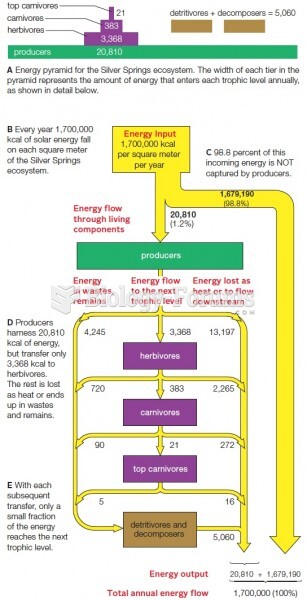|
|
|
Did you know?
In 1844, Charles Goodyear obtained the first patent for a rubber condom.
Did you know?
The longest a person has survived after a heart transplant is 24 years.
Did you know?
Asthma cases in Americans are about 75% higher today than they were in 1980.
Did you know?
A serious new warning has been established for pregnant women against taking ACE inhibitors during pregnancy. In the study, the risk of major birth defects in children whose mothers took ACE inhibitors during the first trimester was nearly three times higher than in children whose mothers didn't take ACE inhibitors. Physicians can prescribe alternative medications for pregnant women who have symptoms of high blood pressure.
Did you know?
There are over 65,000 known species of protozoa. About 10,000 species are parasitic.







